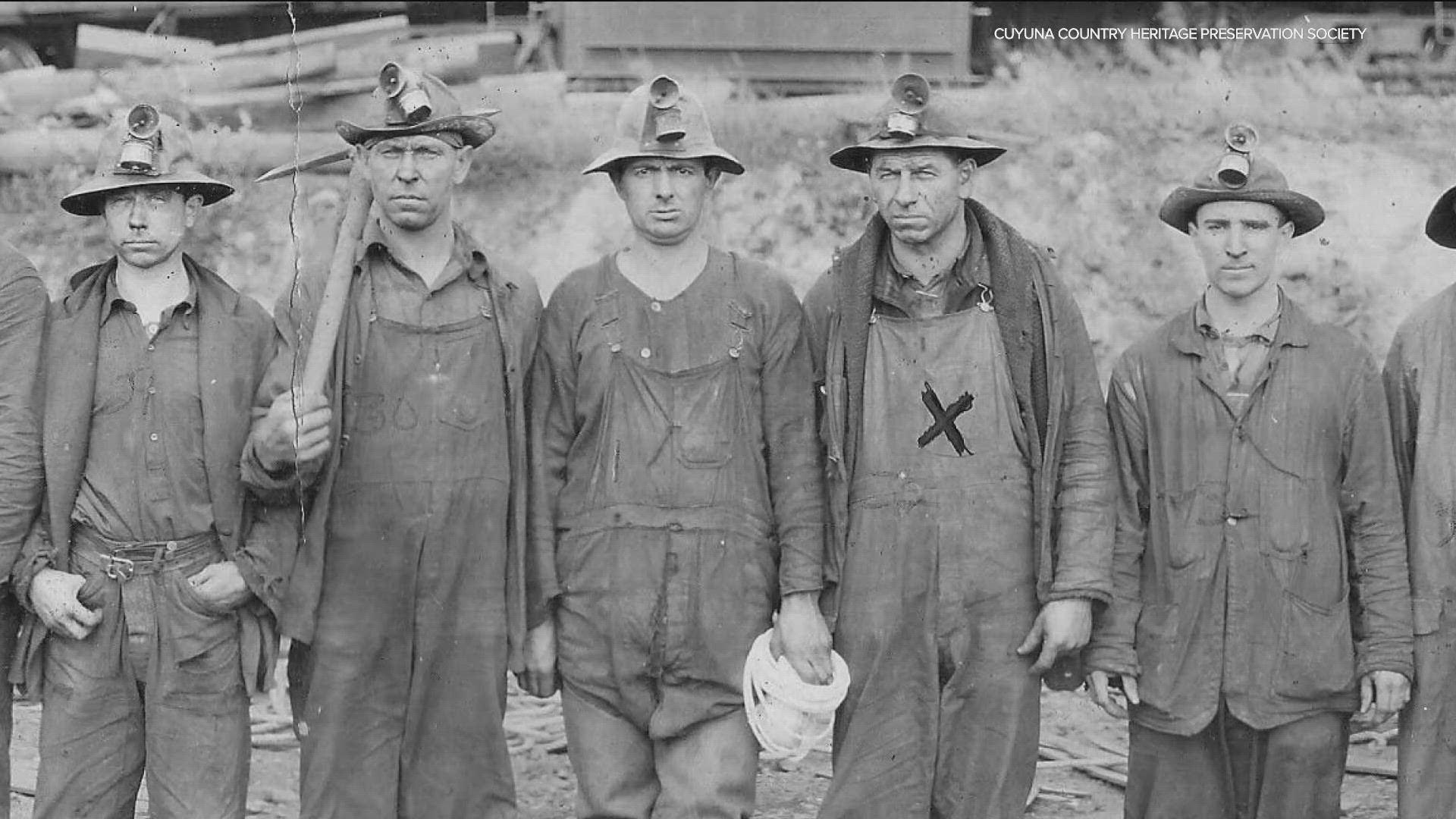CROSBY, Minn. — In the first half of the 20th century, iron ore mining in central and northern Minnesota was at a peak, boosting the local economy and proving essential in the United States' efforts in both World Wars.
By 1924, the manganese-rich Milford Mine, located about five miles north of Crosby on the Cuyuna Iron Range, was among just a handful of underground mines still operating in the area after World War I.
But that all changed on Feb. 5, when 41 men were killed in what became the worst mining disaster in Minnesota's history.
Now, on the 100th anniversary of the disaster, area historians will gather at the Crosby-Ironton High School with community members for the Cuyuna Iron Range Heritage Network's presentation, Remembering the Milford Mine Disaster: 100 Years Later.
The event begins at 7 p.m. in the school's Mayberry Auditorium.
Nearly 200 feet below the earth's dusty red surface, 48 miners went to work their usual shift in the 2,000-foot tunnel, but on this day, only seven of them would ever emerge again to see the sun.
Historians say it was about 3:45 p.m., just 15 minutes before the end of the work day, that strong winds blew through the tunnel, extinguishing their lantern's flames and forever enveloping almost four dozen men in eternal darkness.
It wouldn't be long until the miners closest to the opening saw a rush of water and mud threatening to fill the tunnel. A mad dash to the surface yielded just the seven survivors.
The tunnel was flooded with the waters of nearby Foley Lake, which the official incident report suggested was the result of weakened geologic features caused by mining. The suspected cave-in happened at the eastern end of the mine, which had a direct link to the lake. A five-person commission tapped to investigate the tragedy later determined the owner of the Milford Mine, George H. Crosby, could not be deemed at fault.
"No blame can be attached to the mining company for this unfortunate accident," the report said. "The real cause of the disaster was the fact that imminence and danger from such a rush of mud was not recognized by anyone."
Matt Kangas was one of few survivors from that day. He was interviewed in 2006 by the Brainerd NewsHopper, remembering the event in haunting detail.
“I was working not near anybody. Then the wind hit me. I fell down and my lamp went out. I lit it, it went out again. It was dark and cold. The wind hit me again. I knew what it was. I was in a time like that once before in Michigan. I knew if we lost a minute, it was too late. I yelled. Then I ran like hell. We can’t save our life no more if we don’t run, I know. So I run. No time for gates, no time for the cage. No time for anything. I just run and fall down, and run some more. I get to the ladder. I reach for it. I miss it. I grab it and start up. I am all in. But I’m damned if I stop!’”
According to the Cuyuna Iron Range Heritage Network, the last of the lost miners' bodies was recovered nine months later.
The mine, already struggling among newer, open-pit mining operations, was also hit by the Great Depression, causing a rapid decline in demand for steel. Milford ceased production in 1932, but it wouldn't be until two decades later that mining operations would cease completely on the Cuyuna Range.
According to the Minnesota Historical Society, any one of the area's peak mining years would result in millions of tons of iron ore production to be used for purposes all over the United States.
The once-bustling Milford Mine is now enshrined as a memorial park. Adjacent to the newly created Cuyuna Country State Recreation Area, it serves as a place to encourage outdoor recreation, but more importantly, a tribute to the families and their lost loved ones on Feb. 5, 1924.
WATCH MORE ON KARE 11+
Download the free KARE 11+ app for Roku, Fire TV, Apple TV and other smart TV platforms to watch more from KARE 11 anytime! The KARE 11+ app includes live streams of all of KARE 11's newscasts. You'll also find on-demand replays of newscasts; the latest from KARE 11 Investigates, Breaking the News and the Land of 10,000 Stories; exclusive programs like Verify and HeartThreads; and Minnesota sports talk from our partners at Locked On Minnesota.
- Add KARE 11+ on Roku here or by searching for KARE 11 in the Roku Channel Store.
- Add KARE 11+ on Fire TV here or by searching for KARE 11 in the Amazon App Store.
- Learn more about the KARE 11+ app for Apple TV in the Apple App Store.
- Learn more about KARE 11+ here.
Watch more local news:
Watch the latest local news from the Twin Cities and across Minnesota in our YouTube playlist:

